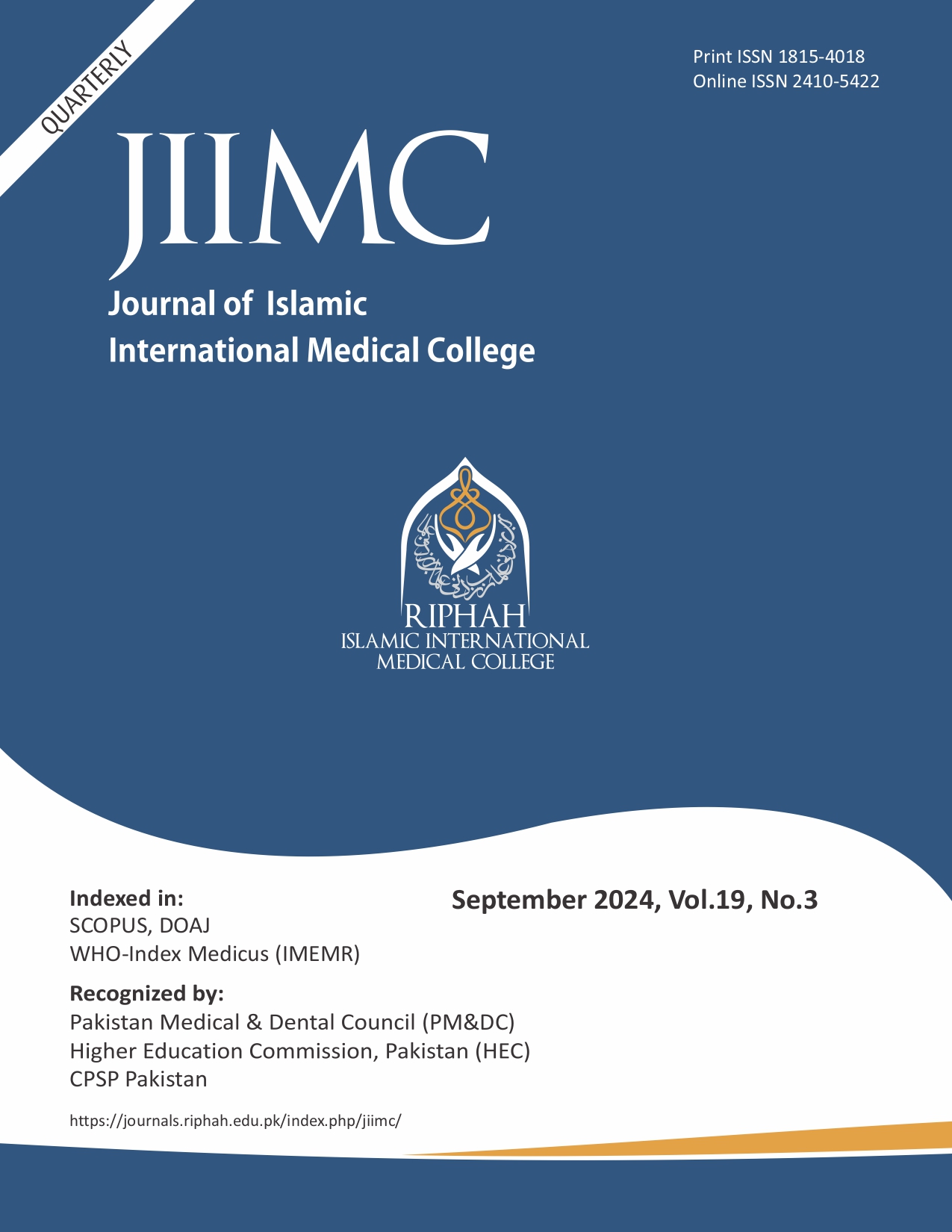Anterior Inferior Cerebellar Artery (AICA) Loop Variants and Its Effect on Audio Vestibular Symptoms Using Three-Dimensional Fast Imaging Employing Steady State Acquisition (3-D FIESTA) MRI Sequence
Keywords:
Anterior Inferior Cerebellar Artery, Cerebellopontine, Facial, MRI, Vestibulocochlear.Abstract
Objective: To assess the effect of vascular loop variant anatomy of anterior inferior cerebellar artery (AICA) types in relation to vestibulocochlear and facial nerves within cerebellopontine angle (CPA) on MRI, in patients presenting with otoneurological symptoms.
Study Design: Cross-sectional study.
Place and Duration of Study: Combined Military Hospital (CMH) Abbottabad for a period of 8 months from July 01, 2022 to February 28, 2023.
Materials and Methods: All patients with audio-vestibular symptoms (group I) pertaining to facial or vestibulocochlear nerve referred for MRI brain were included in the study. Specific MRI protocol for the assessment of cerebellopontine angle and its contents- three-dimensional fast imaging employing steady-state acquisition (3-D FIESTA)- was used to delineate the relation of AICA loop to VII and VIII cranial nerves within cerebellopontine angles and internal auditory meatus on both sides. Patients without any symptoms also
underwent similar MR protocol to serve as a control group (group II). Vascular loop anatomy of AICA in CPA was recorded and its relation to patient's symptomatology, if any, was documented. Findings were compared with the control group. Social Package for Statistical Studies (SPSS) version 25.0 was used for analysis. Data type was Qualitative (categorical) and Chi square test was applied for drawing results. A p value of ≤ 0.05 was considered
statistically significant with 95% confidence interval (CI).
Results: Type I was most common variant in both groups followed by Type II and Type III subsequently. No statistically significant difference was found in the AICA loop variant distribution between the symptomatic and control groups for both right (p = 0.543) and left (p = 0.564) sides with respect to patient's symptoms.
Conclusion: AICA loop within cerebellopontine angle demonstrates variant course with respect to internal auditory meatus in proximity to VII and VIII nerves; this variation has no impact on patient's otoneurological symptoms. Other factors need to be addressed and evaluated for such symptoms in the relevant patients.


